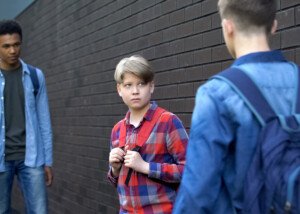
Some victims of intense bullying are simply never believed by their teachers, even though they’ve complained several times.
The psychological harm of bullying is bad enough without having it compounded by a teacher refusing to believe the victim when the victim reports the problem.
I was inspired to write this article after reading a blog in which a girl kept complaining to her teacher that a boy kept jabbing her with a sharpened pencil.
The teacher kept replying something like, “Oh come on, Jack’s too nice to do something like that!”
This type of scenario has also happened to parents of the victims. When the parent brings it to the teacher’s attention, the teacher says something like, “Jennifer’s too nice of a girl to ever do something like that.
“I’m sure there’s some kind of misunderstanding. Everyone likes Jennifer. She’s so sweet to all the teachers!”
The Jacks and Jennifers are never caught in the act by the teachers. Or are they, and ignored?
“Bullying often occurs in areas with little supervision, when teachers are not able to witness it,” says Rashmi Shetgiri, MD, MSHS, medical director at Pediatric Primary Care Clinic in Los Angeles whose research interests include bullying and youth violence prevention.
Thus, the teacher may not be aware. But then again, this doesn’t explain why the teacher turns a blind eye when the problem is brought to their attention.
It’s one thing for a teacher to tell the bully victim or the parents, “Gee, I’m surprised that John’s behaving that way, but I’m going to keep a very close watch on him from now on, and if I see anything suspicious, I will intervene.”
And it’s another thing for a teacher to insist, “John? A bully? No way! He’s one of the most polite students I’ve ever had! I think you’re just being a little over-reactive.”

“Bullies are also a very heterogeneous group,” continues Dr. Shetgiri. “Some bullies are aggressive, or may lack empathy for their victims, whereas others have high self-esteem and highly developed social skills and interact very well with adults, including teachers.”
And if the bully is one of the school’s football heroes, well, this certainly plays much in their favor.
“Studies also show that provocative or aggressive victims can be impulsive, more anxious and less popular than bullies,” says Dr. Shetgiri. “They may have poor social skills and may be less well-liked by peers and teachers.”
Imagine that a popular, bubbly girl who’s on the cheerleading squad and soccer team, with attractive cascading hair and a pretty face, a cute figure and stylish clothes, reports being bullied to a teacher.
Now imagine that a frumpy-looking, loner-type girl who eats by herself during lunch and has no involvement in extra-curriculars, complains of bullying.
The same teacher may believe both, but whom is the teacher more likely to take seriously and assist?
 Dr. Shetgiri is particularly interested in prevention of violence among Latino youth, the implementation of primary-care-based bullying and violence prevention strategies, and health outcomes for children exposed to violence and abuse.
Dr. Shetgiri is particularly interested in prevention of violence among Latino youth, the implementation of primary-care-based bullying and violence prevention strategies, and health outcomes for children exposed to violence and abuse.
 Lorra Garrick has been covering medical, fitness and cybersecurity topics for many years, having written thousands of articles for print magazines and websites, including as a ghostwriter. She’s also a former ACE-certified personal trainer.
Lorra Garrick has been covering medical, fitness and cybersecurity topics for many years, having written thousands of articles for print magazines and websites, including as a ghostwriter. She’s also a former ACE-certified personal trainer.
.









































